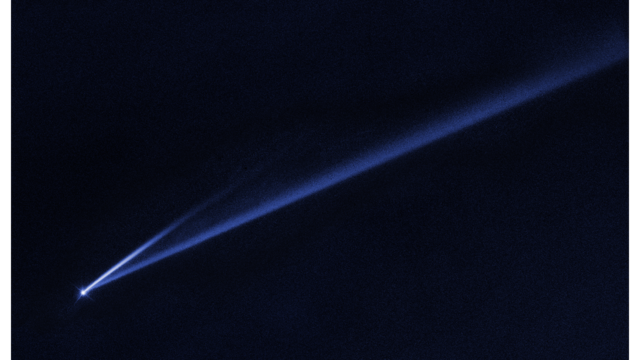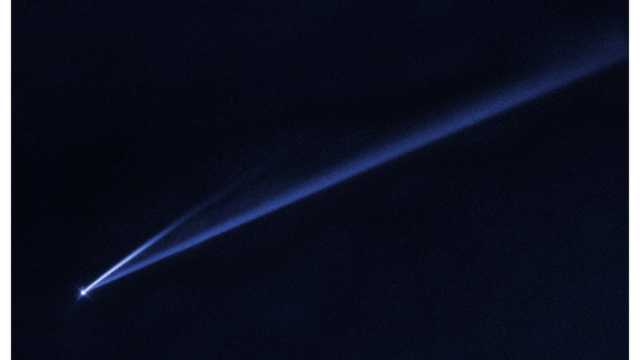

Hubble Witnesses Asteroid Coming Unglued
This Hubble Space Telescope image reveals the gradual self-destruction of an asteroid, whose ejected dusty material has formed two long, thin, comet-like tails. The longer tail stretches more than 500,000 miles (800,000 kilometers) and is roughly 3,000 miles (4,800 kilometers) wide. The shorter tail is about a quarter as long. The streamers will eventually disperse into space.
These unusual, transient features are evidence that the asteroid, known as (6478) Gault, is beginning to come apart by gently puffing off material in two separate episodes. Hubble’s sharp view reveals that the tails are narrow streamers, suggesting that the dust was released in short bursts, lasting anywhere from a few hours to a few days.
The first tail was spotted on Jan. 5, 2019; the second in mid-January. An analysis of both tails suggests the two dust releases occurred around Oct. 28 and Dec. 30, 2018.
Astronomers think the tiny asteroid, only 2.5 miles wide, is disintegrating due to the long-term subtle effects of sunlight, which can slowly speed up its spin until it begins to shed material. In fact, the self-destruction may have been started more than 100 million years ago. Pressure from sunlight very slowly began spinning up the diminutive asteroid at an estimated rate of 1 second every 10,000 years.
The asteroid is located 214 million miles from the Sun, between the orbits of Mars and Jupiter.
Click here for original story, Asteroid (6478) Gault
Source: HubbleSite